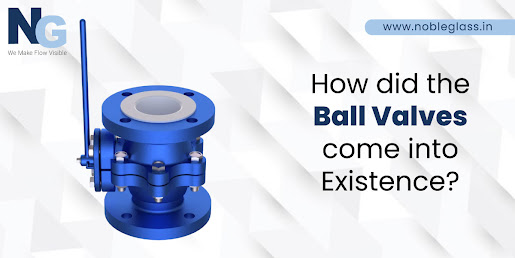How did the Ball Valves come into Existence?
Nowadays, the once-inconspicuous ball valve is recognised as a separate valve category from linear and rotary valves. A spherical plug valve was initially used in the 1950s, however, a different name was in use at the time of its introduction.
Since the 1950s, ball valves have become increasingly common due to the availability of various ball and seat materials, as well as the development of machinery capable of accurately producing the ball's spherical polished surface. The use of these valves has been broadened in recent years due to the development of new seat materials and the introduction of metal seats fabricated from low-wear materials, which have proven particularly useful in applications involving abrasive and high-temperature media.
Ball Valves can have a variety of connection types,
including flanged, socket welded, butt welded, and screwed.
Applications of the Ball Valves:
Ball valves' widespread adoption can be attributed to
their adaptability; they can be used for a wide range of services, from the
relatively mild (water, solvents, acids, and natural gas) to the quite harsh
(oxygen, hydrogen peroxide, and other gases). PTFE Lined Ball Valves
manufactured by the most popular as well as reliable PTFE Lined
Ball Valves manufacturer, are used in a variety of heavy Industrial
applications.
Materials used to manufacture Ball Valves:
Ball valves are often made with a body made of carbon steel (WCB or LCB) and a ball and shaft made of stainless steel (316 or CF8M). The body can be constructed out of stainless alloys for use in low/high-temperature environments or when corrosion is a concern.
Because of it being chemically inert to various fluids and having a low coefficient of friction (less than 0.1), PTFE (Polytetrafluoroethylene) is typically used as the seat material in ball valves.
PTFE Lined Ball Valves manufacturer in India will typically include a pressure/temperature curve to indicate the maximum safe operating temperature and pressure for the valve given that PTFE softens when heated.
Special Nylons, Polyetheretherketone (PEEK), and
powder-filled PTFEs are utilised to increase stiffness over the seating face
and maximum service temperature beyond what is possible with regular PTFE. Ball
valves with metal seats are mandatory above 280°C.
Floating Design Ball Valve:
By pressing the ball seats together, the ball is kept
in place in this configuration between two ball seats. A shaft that is attached
to a slot on the top of the ball drives the ball in order to turn it 90° or
quarter turns. Due to the effect of upstream line pressure, the ball can slide
a little to the side in the slot. According to the floating ball valve design
principle, the downstream seat is always thought of as the principal seat
because it is loaded by line pressure. If the upstream seat design includes
pre-loading or spring, it may occasionally additionally provide a secondary
seal.
Trunnion Mounted Design Ball Valve:
The ball in this design is held in place by a trunnion
rather than the valve seats, resulting in much-increased pressure and
temperature ratings. The idea is to have the trunnion and shaft function as a
single unit. To keep the ball from bouncing off the downstream seat, the shaft
and trunnion are kept in bearings. The major seat in a trunnion-mounted ball
valve is located on the upstream side because this is where the seat is most
easily loaded, as it can slide forward against the ball. A spring mechanism is
incorporated behind both seats to create a supplementary seal on the downstream
side and to provide even seat loading even at low pressures. Trunnion-mounted
ball valves have the same bidirectional shutoff capabilities as floating ball
valve designs. Trunnion-mounted ball valves offer several advantages over their
floating counterparts, the most notable of which being a reduction in operating
torque and, by extension, actuation costs.
Other Designs of the Body of the Ball Valve:
One Piece Design:
The ball is inserted into the body via an opening in
one of the pipe flanges and sealed with a gasket that is integral to the upper
face. This maximises resistance and prevents weak points.
Split Body Design:
The body of this valve is split in one or two places
along the same plane as the valve flanges, giving it the alternate names of
2-piece and 3-piece ball valves. The ball is then secured to the body with
bolts. Due to the lighter weight of the components, trunnion-mounted ball
valves are more frequent in smaller sizes than their one-piece counterparts,
and three-piece ball valves are widely used for these applications. The biggest
benefit of split body ball valves is how simple they are to maintain.
Top Entry Design:
An unusual feature of this valve is that the ball
enters the valve via a bonnet located above the valve's opening. The key
benefit is that the valve may be maintained without having to remove it from
the pipeline. It is frequently utilised in piping systems that include welding.
Fully Welded Design:
The valve body in this case is of welded construction and cannot be serviced in any way. These are commonly utilised in gas transmission lines.



Comments
Post a Comment